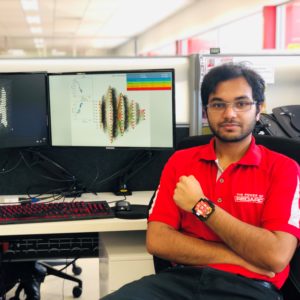 The Industry Mentoring Network in STEM (IMNIS) program has provided a platform to discuss with the experts in the industry about implementing the academic studies and research to real-world problems. It is a platform to network with industrial leads and develop portfolios with the assistance of mentors. The main essence is – if we are passionate about what we do, we should network, share, and learn.
The Industry Mentoring Network in STEM (IMNIS) program has provided a platform to discuss with the experts in the industry about implementing the academic studies and research to real-world problems. It is a platform to network with industrial leads and develop portfolios with the assistance of mentors. The main essence is – if we are passionate about what we do, we should network, share, and learn.
My PhD is in Artificial Intelligence and Machine Learning in Diagnostic Applications. It is sponsored by a company called REDARC Electronics. Having an overlap between the academics and industry from the start has been a great learning experience. However, specific to the research field, I was keen to learn from experts in biomedical technologists and explore the opportunities, understand market problems, their business strategies in developing innovative new products. This has motivated me to become undertake the IMNIS.
Dr Don Perugini, the CEO of Presagen, has been my mentor through IMNIS. He brings in his vast experience in research and development of AI products for medical applications. Having discussions with him has allowed me to investigate on the challenges from an overall business perspective, making prospective customers such as health care professionals understand the importance of such convoluted products, global scalability issues, limited skills sets and many more. Apart from the business challenges, he has helped me with the local networking groups and meetups specific to the AI industry. Working within the industry, I have been able to relate and present him the current challenges I am facing in development and implementation. At times where he may not have an answer to specific problems, he has guided me with networks who can address these problems.
IMNIS is a bridge which has been helping to fill the gap between academia and industry. Through this mentorship program, PhD candidates or research students can understand the demand and the requirements of the industries, where they can implement their highly specialised skills in research. Most importantly, it is an excellent platform to network and communicate even if industrial involvement is not an end goal. These are few of the points which I would like to be addressed concretely, and maybe create a path for working and contributing to industries as a researcher.

